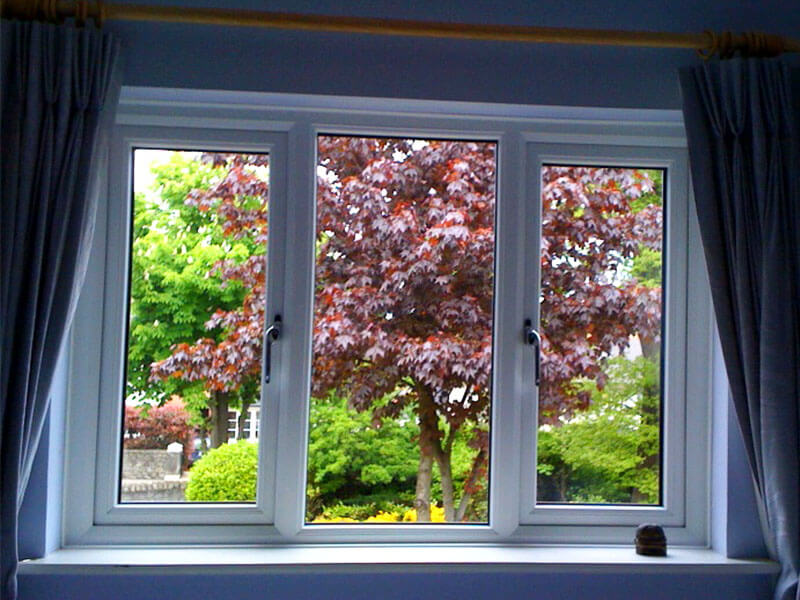In the realm of energy efficiency and home comfort, double glazing has long been a staple in residential and commercial construction. Traditionally, double glazing involves two panes of glass separated by a space that is often filled with air or an inert gas, which serves to insulate and reduce heat loss. However, recent advancements in technology have led to a new wave of innovations in double glazing that promise to enhance its performance, durability, and aesthetic appeal. This article explores some of these groundbreaking developments and their implications for homeowners and builders alike.

Enhanced Insulation Properties
One of the most significant advancements in double glazing technology is the introduction of vacuum insulated glazing (VIG). Unlike conventional double glazing, which relies on a gas-filled space, VIG features a vacuum between the glass panes. This vacuum dramatically reduces heat transfer, achieving insulation values that can be up to three times higher than standard double glazing. The result is a window that not only minimizes heat loss during winter but also keeps interiors cooler in summer, leading to reduced energy consumption and lower utility bills.
Furthermore, VIG is incredibly thin, allowing for a sleeker design without sacrificing performance. This feature makes it an attractive option for modern architecture, where larger windows and glass facades are increasingly popular. The aesthetic appeal combined with superior insulation makes VIG a game-changer in the double glazing market.
Smart Glazing Technologies
Another remarkable advancement in double glazing is the integration of smart glazing technologies. These windows can change their properties in response to environmental conditions, significantly enhancing their functionality. For instance, electrochromic glass can be tinted electronically, allowing users to control the amount of light and heat that enters a space. This not only improves comfort but also reduces reliance on artificial heating and cooling systems.
Moreover, some smart glazing solutions incorporate photovoltaic cells that can generate electricity from sunlight. This dual-functionality allows windows to serve as both a source of natural light and a renewable energy source, making them an attractive option for eco-conscious homeowners. The ability to harness solar energy while maintaining comfort and aesthetic appeal represents a significant leap forward in the double glazing industry.
Improved Durability and Maintenance
Advancements in materials science have also led to the development of more durable and low-maintenance double glazing options. Traditional double glazing units can suffer from seal failure over time, leading to condensation between the panes and reduced insulation performance. However, modern double glazing solutions utilize advanced sealant technologies and materials that are resistant to UV degradation and moisture penetration.
For instance, the introduction of warm edge spacer bars, which are made from materials with low thermal conductivity, helps to reduce heat loss at the edges of the glazing unit. These spacer bars also prevent condensation and mold growth, contributing to a healthier indoor environment. Additionally, manufacturers are now offering self-cleaning glass options that utilize a special coating to break down dirt and grime when exposed to sunlight, making maintenance easier and less frequent.
Aesthetic Customization and Design Flexibility
As the demand for personalized home aesthetics grows, double glazing manufacturers are responding with greater design flexibility. Homeowners can now choose from a variety of frame materials, colors, and finishes to complement their architectural style. Innovations in manufacturing processes allow for the production of bespoke shapes and sizes, enabling unique design solutions that were previously difficult to achieve.
Furthermore, decorative glazing options, such as patterned or frosted glass, enhance privacy without sacrificing natural light. This customization potential enables homeowners to express their individual style while benefiting from the energy efficiency and performance of modern double glazing.
Sustainability and Environmental Impact
With growing awareness of environmental issues, the double glazing industry is also making strides towards sustainability. Manufacturers are increasingly focusing on using recycled materials in the production of frames and glass, reducing the carbon footprint associated with new windows. Additionally, many modern double glazing units are designed for easy disassembly and recycling at the end of their life cycle, promoting a circular economy approach.
Furthermore, the energy efficiency provided by advanced double glazing technologies significantly contributes to reducing greenhouse gas emissions. By lowering energy consumption for heating and cooling, these windows play a crucial role in mitigating climate change and promoting sustainable living.
Conclusion
The advancements in double glazing technology represent a significant leap forward in energy efficiency, comfort, and design flexibility. From vacuum insulated glazing to smart technologies and sustainable materials, these innovations are transforming the way we think about windows and their role in our homes. As homeowners seek to reduce energy costs and improve their living environments, the next generation of double glazing offers a compelling solution that combines performance with aesthetic appeal.
In an era where energy efficiency and sustainability are paramount, the continued evolution of double glazing technology will undoubtedly play a vital role in shaping the future of residential and commercial construction. With these advancements, the benefits of double glazing are more accessible than ever, paving the way for a more energy-efficient and environmentally friendly built environment.







